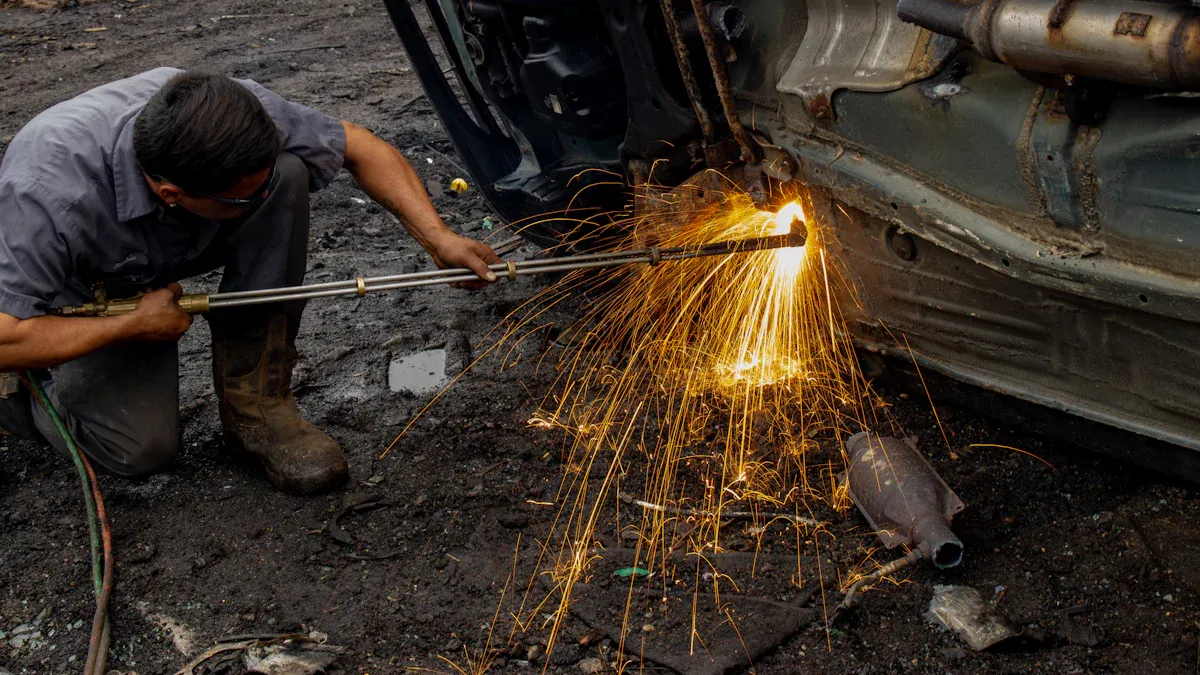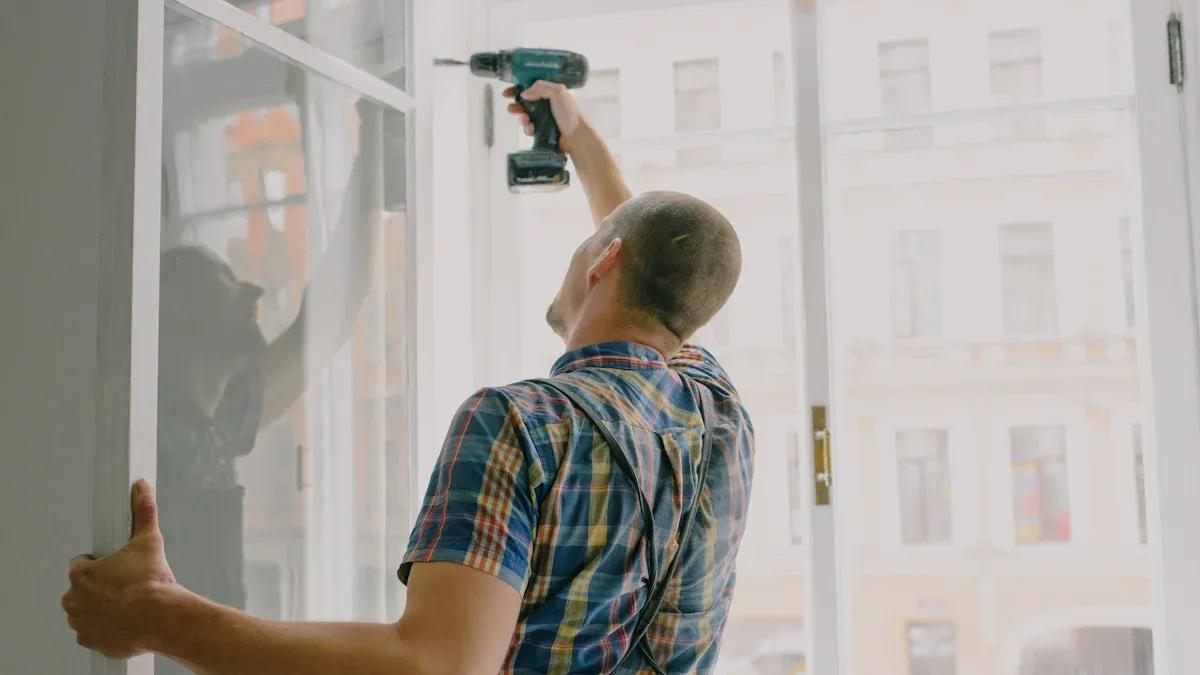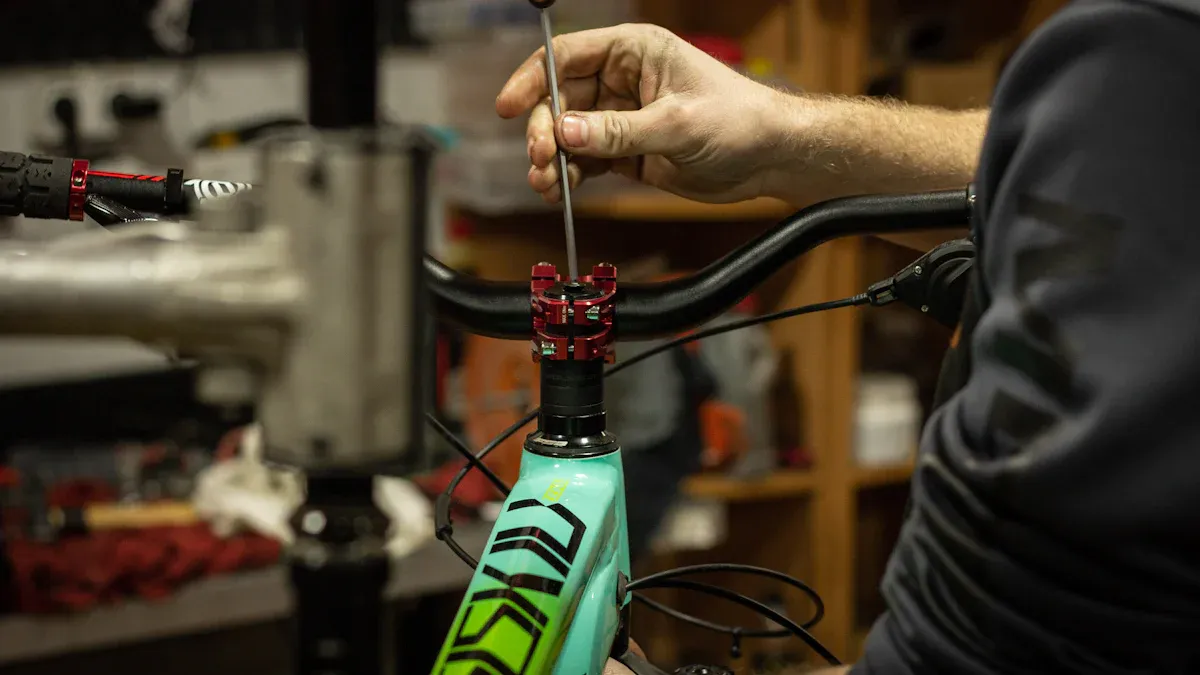
Maintaining your bike frame after welding is very important. It keeps you safe and makes your bike last longer. If you ignore this, it can cause big problems. For example, multiaxial fatigue can harm welded joints. This is especially true when there are heavy loads. If you ride hard or on bumpy roads, the chance of failure goes up a lot. Here are some important tips to help you keep your frame in great shape. These tips will also help with good welding bike frame repair.
Key Takeaways
Check your bike frame often after welding. This helps find cracks and problems early. It keeps you safe and makes your bike last longer.
Wipe down your bike frame after each ride. This stops rust and damage. Use a soft cloth and pay attention to joints and welds.
Put on protective coatings like Electrophoretic Deposition. This protects your bike from rust and wear. It makes your bike stronger.
Use good welding methods like stitch welding. This creates strong connections. This way, it can absorb shocks and makes the frame more flexible.
Fix common problems like misalignment and corrosion quickly. Fast fixes save money and give you a smoother ride.
Inspection

Checking your bike frame after welding is very important. It helps keep you safe and makes your bike last longer. A good inspection can find problems before they get worse. You should check your bike often, especially after every ride. Here are some good ways to inspect your bike frame:
Visual Inspection
Start by looking closely at your bike. Pay attention to the joints where the tubes connect. These spots can easily get cracks. Use a magnifying glass to find cracks that are as small as 1 mm (0.04 in). Watch for any strange signs, like:
Joint Thickness: Knowing how thick the joint is helps you check weld quality.
Weld Appearance: A strong weld should look smooth and even. But remember, looks alone don’t mean it’s strong.
Material Application: A thin bead can still join metal well, adding strength and stopping stress risers.
Be careful because paint can hide real problems. A crack-like mark might just be a paint crack, making it harder to inspect.
Tool-Assisted Inspection
For a better check, think about using tools that find hidden flaws. The Evident 45MG ultrasonic thickness gage works well for welded bike frames. This tool tests without damaging the bike and shows internal damage that you can’t see outside. It measures how sound travels to find problems in the material.
Also, you can check if everything lines up with a plumb bob for accuracy. For exact checks, use Retrocycle’s alignment tool. Regular inspections help you find small cracks before they turn into big problems.
By using these inspection methods, you can keep your bike frame strong and enjoy safer rides.
Maintenance Practices

Taking care of your bike frame after welding is very important. It helps your bike last longer and keeps you safe. Here are some key maintenance steps you should do:
Regular Cleaning
Cleaning your bike frame often stops rust and other damage. After each ride, make sure to clean and dry your bike. Here are some easy steps to follow:
Use a soft cloth to wipe all parts of the frame, even the hard-to-reach areas.
Focus on the joints and welds because dirt and moisture can build up there.
Protect the frame with a coating to stop rust from forming.
Tip: Cleaning and drying your bike after rides is very important. This stops moisture from building up, which can cause rust.
Protective Coatings
Using protective coatings can help your welded bike frame last much longer. Here are two good types of coatings:
Coating Type | Benefits |
|---|---|
Gives full coverage against rust, even in hard-to-reach spots like weld seams. | |
High-temp Powder Coating | Provides UV protection and stops wear, making the outer finish stronger. |
Using ED coating as a rust-proof base before powder coating is very important. This mix keeps your bike frame safe from things that can cause damage.
Post-Weld Heat Treatment
Post-weld heat treatment is very important for keeping your bike frame strong. This process helps lower leftover stress, especially in frames made from cromoly steel. It includes stress relief, quenching, and tempering, which help reduce stress caused by welding.
While stress relief can lower stress in joints or tube walls, it is important to keep the frame strong during this process. Good heat treatment makes sure your bike frame stays strong and dependable for many years.
By following these maintenance steps, you can keep your bike frame in great shape and enjoy safer rides. Regular cleaning, using protective coatings, and doing post-weld heat treatment are all important for keeping your bike frame strong after welding.
Common Issues
After welding, your bike frame can have some common problems. Knowing these issues helps you keep your bike strong. Here are the main problems you might see:
Cracks and Fractures
Cracks can happen in welded bike frames. They often show up in the seat tube of aluminum frames. For example, a friend had an aluminum frame that cracked below the slot. To stop cracks, check your bike often for signs of stress. If you find any cracks, fix them right away. Here are some good repair methods:
TIG Welding: This method works well for thin bike frame materials. It makes strong and precise welds.
Stop Drilling: If you see a crack getting bigger, use this method to stop it from growing.
Avoid Brazing: This method is not good for structural repairs because it is weak.
Corrosion
Corrosion can hurt both steel and aluminum bike frames. It is a process that weakens the material over time. To reduce corrosion, follow these tips:
Make sure paint covers all bare metal areas. This stops moisture from causing rust.
If you see corrosion, clean it off right away. Use touch-up paint to seal the area and protect it.
Doing these things helps keep your bike strong and makes it last longer.
Misalignment
Misalignment can cause handling problems and chainline issues. You can use different tools to check and fix alignment:
Tool | Primary Function | Notes |
|---|---|---|
Repair Stand | Holds bike for measuring | A strong stand is important; a bench vice can help with bending. |
FAI-2 Frame Alignment Indicator | Checks frame symmetry | Works like a wheel dishing tool, comparing both sides. |
DC-1 Digital Caliper | Measures frame widths accurately | Important for precise checks. |
Cold-setting is a way to fix misalignment, but it doesn’t work for all materials. Steel frames can often be cold-set, but thin aluminum and carbon fiber frames should not be bent.
By knowing these common issues and taking steps to prevent them, you can keep your bike frame in great shape after welding.
Welding Bike Frame Repair Techniques
When you need to fix your bike frame, using the right welding methods is very important. One good method is stitch welding. This technique makes small welds along the joint instead of one long line. Stitch welding has many benefits:
Strength: It creates strong connections, especially in thinner walls. Modern steels used in bike frames are less brittle, making stitch welding a good choice.
Flexibility: This method lets the frame move a bit, which helps absorb shocks while riding.
Here’s a quick look at how stitch welding compares to other methods:
Technique | Strengths | Weaknesses |
|---|---|---|
Stitch Welding | Strong for thinner walls, modern steels are less brittle | Needs skilled workers |
Brazing | Less heat affects steel, easy to replace damaged tubes | Might not be as strong as welding |
While stitch welding works well, you should also think about proper cooling techniques after welding. Cooling your bike frame the right way helps keep it strong. Here are some tips:
Avoid Rapid Cooling: Cooling too fast can cause warping or cracking. Let the frame cool down naturally at room temperature.
Use Water Sparingly: If you need to use water to cool the welds, do it carefully. Too much water can stress the metal.
Monitor Temperature: Watch the temperature of the weld area. A slow drop in temperature helps keep the frame strong.
Remember, the safety of your bike frame depends on how you weld. Here are some common mistakes to avoid when welding:
Clean the tubes well before welding to stop contamination.
Use the right filler materials to lower the risk of porosity in welds.
Think about taking welding classes to learn more about techniques and control.
By following these methods and tips, you can make your bike frame last longer after welding. Good frame prep and careful work during welding will help keep your bike strong for many years.
Taking care of your bike frame after welding is very important. It helps keep it strong and safe. Checking your bike regularly helps you find problems like cracks, rust, and misalignment early. Here are some good reasons to maintain your bike often:
Improve how well your bike performs.
Make your bike last longer with quick fixes.
Save money by avoiding big repair costs.
Have a smoother ride without any issues.
By doing these things, you can keep your bike frame strong and dependable for many years. A bike that is well taken care of makes your rides better and keeps you safe on the road.
Key Aspect | Details |
|---|---|
Use new materials like chromium-molybdenum for better performance. | |
Welding Techniques | Choose TIG and MIG welding because they work well and are effective. |
Benefits of Brazing | Think about brazing for less heat damage and easier tube changes. |
Modern Innovations | Look into air-hardened steel for stronger joints. |
FAQ
What should I check before welding my bike frame?
Before you weld, look for cracks or damage on the frame. Make sure to clean the area well to get rid of dirt and rust. Use the right welding methods to prevent overheating and making the frame weak.
How often should I inspect my bike frame after welding?
Check your bike frame after every ride, especially in the first few weeks after welding. Regular checks help you find any cracks or misalignments early, which keeps you safe.
Can I use any type of welding for my bike frame?
Not all welding types are good for bike frames. TIG and MIG welding are best for most materials. Don’t use brazing for structural repairs because it might not be strong enough.
How can I prevent corrosion on my welded bike frame?
To stop corrosion, clean your bike often and use protective coatings. Make sure all bare metal areas are painted to keep moisture and rust away.
When is welding a safe solution for bike frame repair?
Welding is safe when the frame has small cracks or damage. If the frame is badly damaged, think about replacing it instead. Always ask a professional if you are not sure.
See Also
Tips for Caring for Your Steel Bicycle Frame Effectively
Proven Methods to Eliminate Rust from Your Bike Frame
Easy Strategies to Safeguard Your Bicycle Frame
Best Practices for Safely Painting Carbon Bike Frames
Crucial Tips for Protecting Your Bike Frame Every Cyclist Needs
